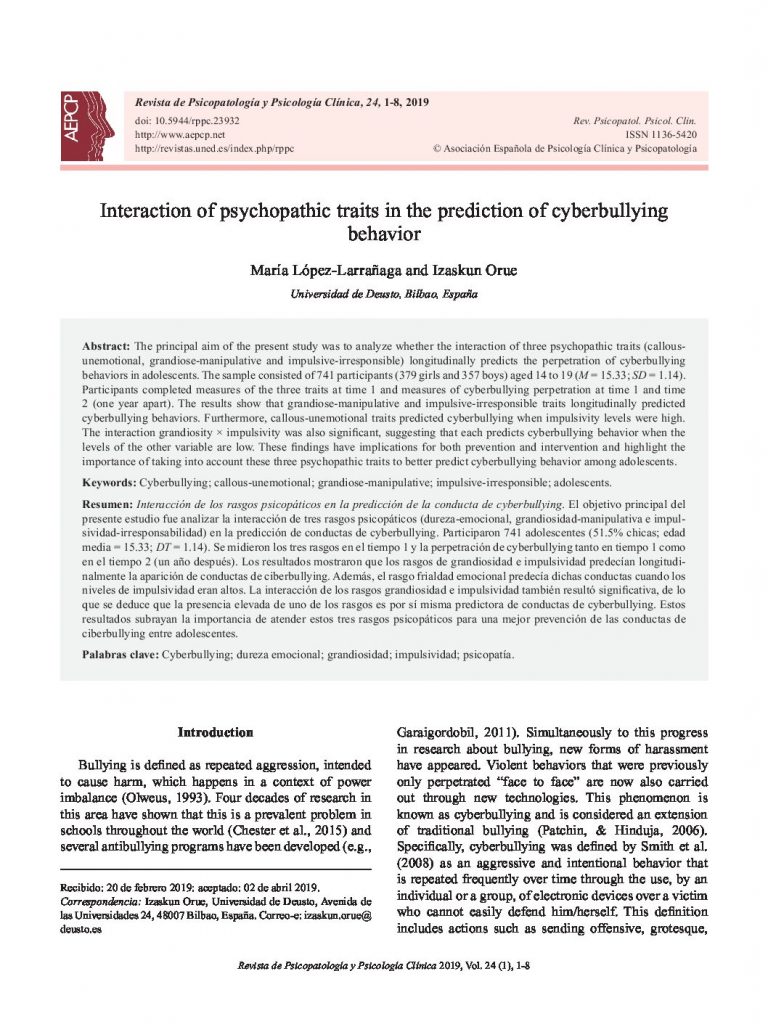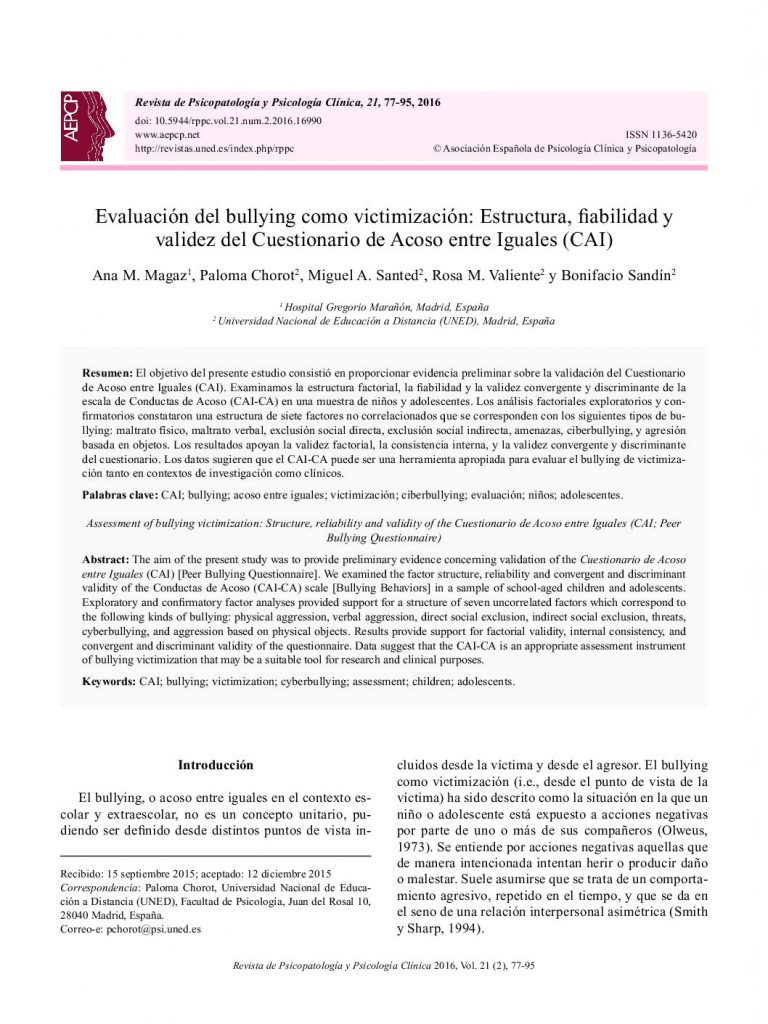Interaction of psychopathic traits in the prediction of cyberbullying behavior.
Interaction of psychopathic traits in the prediction of cyberbullying behavior

- Habilidades de mindfulness y cognición social en la predicción de la sintomatología afectiva en la esquizofrenia, el trastorno obsesivo-compulsivo y participantes no clínicos.
- Ansiedad y tristeza-depresión: Una aproximación desde la teoría de la indefensión-desesperanza.
- Sintomatología física y mental asociada al síndrome de burnout en los profesionales de la enseñanza.
- Evaluación de una intervención logopédica en pacientes con la enfermedad de Alzheimer en tratamiento colinérgico: Un estudio piloto.
- Asma de inicio en la infancia: Impacto en la personalidad y la psicopatología en una muestra de adolescentes.
- Interaction of psychopathic traits in the prediction of cyberbullying behavior.
The principal aim of the present study was to analyze whether the interaction of three psychopathic traits (callous-unemotional, grandiose-manipulative and impulsive-irresponsible) longitudinally predicts the perpetration of cyberbullying behaviors in adolescents. The sample consisted of 741 participants (379 girls and 357 boys) aged 14 to 19 (M= 15.33; SD= 1.14). Participants completed measures of the three traits at time 1 and measures of cyberbullying perpetration at time 1 and time 2 (one year apart). The results show that grandiose-manipulative and impulsive-irresponsible traits longitudinally predicted cyberbullying behaviors. Furthermore, callous-unemotional traits predicted cyberbullying when impulsivity levels were high. The interaction grandiosity × impulsivity was also significant, suggesting that each predicts cyberbullying behavior when the levels of the other variable are high. These findings have implications for both prevention and intervention and highlight the importance of taking into account these three psychopathic traits to better predict cyberbullying behavior among adolescents.
El objetivo principal fue analizar la interacción de tres rasgos psicopáticos (dureza-emocional, grandiosidad-manipulativa e impulsividad-irresponsabilidad) en la predicción de conductas de cyberbullying. Participaron 741 adolescentes (51.5% chicas; edad media = 15.33; DT = 1.14). Se midieron los tres rasgos en el tiempo 1 y la perpetración de cyberbullying tanto en tiempo 1 como en el tiempo 2 (un año después). Los resultados mostraron que los rasgos de grandiosidad e impulsividad predecían longitudinalmente la aparición de conductas de ciberbullying. Además, el rasgo frialdad emocional predecía dichas conductas cuando los niveles de impulsividad eran altos. La interacción de los rasgos grandiosidad e impulsividad también resultó significativa, de lo que se deduce que la presencia elevada de uno de los rasgos es por sí misma predictora de conductas de cyberbullying. Estos resultados subrayan la importancia de atender estos tres rasgos psicopáticos para una mejor prevención de las conductas de ciberbullying entre adolescentes.




